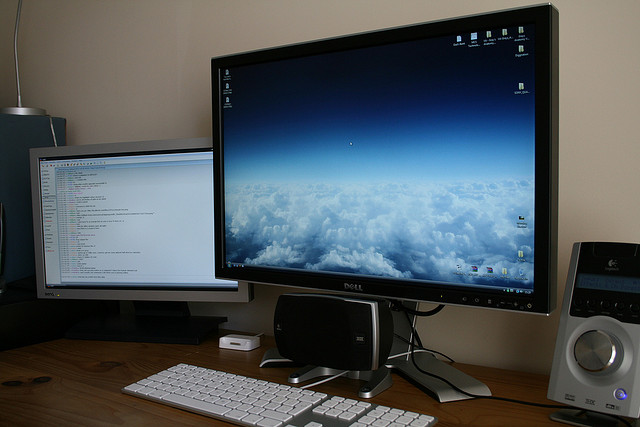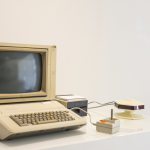Many computer users connect their systems to a monitor or television screen using a DVI cable. DVI stands for “Digital Visual Interface”, and is essentially the successor to the older analogue VGA cables that have been around since the late 1980s.

Why People use DVI Cables
DVI cables have become popular, due to the fact that they offer digital video rather than analogue, which means that pictures on monitors and televisions appear clearer and sharper than their analogue VGA counterparts.
It is also possible to attain high resolutions of up to 1920 x 1200 using a single-link DVI cable, or 2560 x 1600 using a dual-link DVI cable. The difference between the two types of cable, in case you were wondering, is that dual-link cables have an extra 6 pins on their connectors.
One of the most common uses for DVI cables is to connect games consoles such as the Sony PlayStation 3 and the Microsoft Xbox 360 to widescreen HD (high-definition) LCD televisions and monitors, since pretty much all modern HD screens include a DVI port on the back of them. Like with VGA cables, DVI cables are inexpensive to buy and straightforward to connect between devices.
The Downsides to using DVI Cables
Although DVI cables offer superb video quality and high resolutions, the main downsides to them are that they only carry video signals. This means that if you use a widescreen HD monitor with your PC, you will need to use two cables to transmit video and audio signals to your monitor.
Anyone that uses a computer will know that you can easily end up with a jungle of wires at the back of your desk or on the floor, making it harder to organise your cables (especially if most of them are the same colour and thickness).
Such scenarios can even be a trip hazard too if you have to run cables across a room from your PC to your monitor. Wouldn’t life be so much easier if you could just use one cable for audio and video signals from your computer? Well thankfully the computer gods have answered our prayers and come up with the perfect solution – HDMI!
Why you should be using HDMI Instead of DVI Cables
HDMI (short for High-Definition Multimedia Interface) has been around for about 10 years now, and is an increasingly popular alternative to older DVI and VGA cables when it comes to connecting up your PC to your monitor or HD television.
HDMI cables enable you to basically use one cable for your audio and video signals, which is great if you use a widescreen HD monitor with built-in speakers, for example, as it means that you don’t need to buy and use a separate analogue 3.5mm audio cable if you want to listen to sound from your PC!
The great thing about HDMI is that the latest version of the display standard, version 2.0, supports 3D and 4K, so if you have a 3D-capable HD television you can watch 3D programming, and for those high resolution seekers, 4K means that you can output video signals to a supported television of up to 3840 x 2160, which is obviously much higher than the standard HD resolution of 1920 x 1080.











Leave a Reply